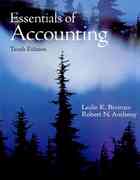Question
Y5 To produce widgets, a firm uses both workers (W) and machines (M). In order to operate, each machine requires exactly 3 workers. An operational
Y5
To produce widgets, a firm uses both workers (W) and machines (M). In order to operate, each machine requires exactly 3 workers. An operational machine produces 1 widget per day. A worker that does not have a machine to operate can produce nothing (and similarly, a machine with less than 3 workers produces nothing).
(a) Assume that both machines and workers can be purchased in fractional amounts. Write down an expression for the production function of this firm (10 points).
(b) Draw an isoquant for the firm for each level of daily production, Q = 2 , 3 , 4. Put W on the y-axis, M on the x-axis, and label all important points (9 points).
(c) Draw an isoquant for the firm for a general level of daily production, Q . Where Q is a positive, whole number. Put W on the y-axis, M on the x-axis, and label all important points (8 points).
(d) Suppose we know that the profit-maximizing level of output for the firm is Q * widgets per-day, where Q *is a positive, whole number. In terms of Q * , how many workers does the firm hire, and how many machines does the firm purchase if the firm maximizes profit (8 points)?
Step by Step Solution
There are 3 Steps involved in it
Step: 1

Get Instant Access to Expert-Tailored Solutions
See step-by-step solutions with expert insights and AI powered tools for academic success
Step: 2

Step: 3

Ace Your Homework with AI
Get the answers you need in no time with our AI-driven, step-by-step assistance
Get Started


